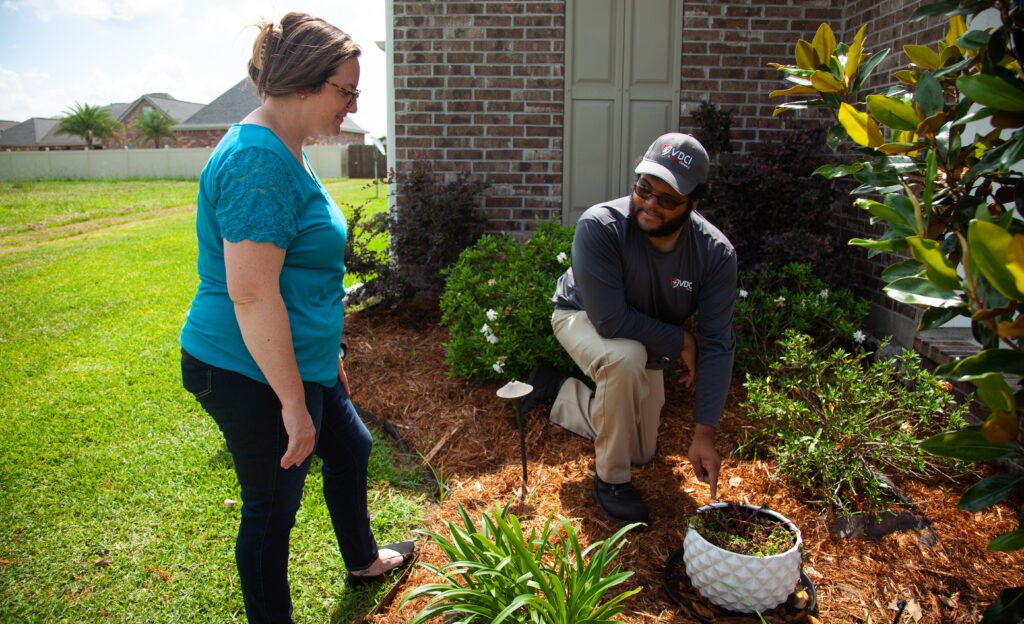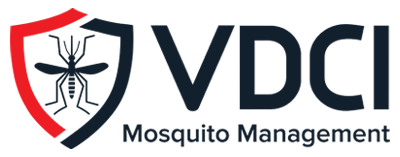6 Components to a Mosquito Larval Surveillance and Control Program
Mosquito larval surveillance and larval control are critical components of any effective Integrated Mosquito Management (IMM) program because when mosquitoes are eliminated prior to becoming adults, they cannot pose a nuisance or disease problem. In fact, larval mosquito control measures are often the largest and most extensive aspect of municipal mosquito control programs and are more important than ever for compliance with state and federal regulations. Below we outline six key components of a successful surveillance larval mosquito surveillance and larva control program.

1. Larval Mosquito Surveillance
Trained field technicians must inspect both known sources of standing water and any newly discovered standing water for the presence of mosquito larvae. When a field technician conducts a larva survey of these mosquito larval habitats, they use standard larva dipping techniques to sample the water for the immature mosquitoes. If larvae or pupae are detected, the stage of development the larvae are in (Instar) and the number of larvae per dip is recorded, typically as an average of 3 – 5 dips per site. After the larval survey dipping takes place, the technician must determine the proper larval control measures that should be taken. Possible actions include: “No Action”, “Physical Control”, “Biological Control” or “Chemical Control”.

2. Physical Mosquito Larval Control
Physical manipulation of the larval environment can be an effective anti larval control measure. Dumping a birdbath, bucket, or kiddie pool that has mosquito larvae present, unclogging a rain gutter that is holding water, clearing a culvert so a ditch will flow better, and disposing of a tire pile are all examples of physical larval control measures. Physical larva control has the advantage of not requiring any pesticide application and can often be maintained indefinitely through public education.

3. Public Education
Teaching people to be aware of potential mosquito breeding habitat in their area and showing them how to reduce or eliminate such habitat can help reduce mosquito populations. Each interaction with the public is an opportunity to educate citizens about where mosquitoes breed and lay their eggs. This knowledge can then be used to reduce mosquito breeding potential at the local level. Fliers and educational material can enhance this aspect of a larval control program.
4. Biological Mosquito Larval Control
Biological mosquito control involves introducing other living organisms into the mosquitoes’ environment to reduce the mosquito numbers through predation. Local laws must be considered prior to any biological control action, as the introduction of new species to an area is often regulated or prohibited. Fish, such as Gambusia affinis (the mosquito fish) or various minnow and sunfish species are all excellent biological controls for mosquito larvae. Propagating Dragonfly nymphs, either through transplanting or choosing to not use an insect growth regulator in certain areas, is another good biological larval control measure.
5. Chemical Mosquito Larval Control
Chemical mosquito larval control is the most common form of larval control. The technician must assess the individual site, and if chemical application is warranted, determine what the appropriate larvicide is for that situation. The most commonly used larvicide across the country is Bacillus thuringiensis israelensis (Bti), a naturally occurring soil bacterium that is both target specific and environmentally sound. Other effective larvicides include another bacterium, Bacillus sphaericus (Bs), methoprene, an insect growth regulator, and several larvicide oils (primarily for control of mosquito pupae).
6. Record Keeping
Recording accurate data is one of the most important aspects of a larval control program. By using modern GPS/GIS technology, larval habitats can be mapped for use during further site inspections, to improve the efficiency and effectiveness of the larval control program and to meet regulatory requirements. Maintaining this data from year to year allows a program manager to understand the seasonal population trends in different larval habitats throughout their control area.
An important component of any successful Integrated Mosquito Management program is mosquito surveillance and larval control. A comprehensive larval control program should be one of the primary pillars for controlling nuisance and disease vectoring mosquitoes. Should you have any questions about your existing larval mosquito control program, or if you are considering establishing one, Vector Disease Control International (VDCI) is always available at whatever level of assistance you desire.
Government Partners in Mosquito Management: Contact Us Today
Mosquito surveillance is an important component of an integrated mosquito management program. Our team of mosquito management experts take pride in partnering with municipalities, mosquito abatement districts, county, and state entities and are here to help guide you in delivering environmentally-conscious and cost-effective mosquito management.
Complete the form below or call 866-419-4716 to connect with a mosquito surveillance expert.
 Since 1992, Vector Disease Control International (VDCI) has taken pride in providing municipalities, mosquito abatement districts, industrial sites, planned communities, homeowners associations, and golf courses with the tools they need to run effective mosquito control programs. We are determined to protect the public health of the communities in which we operate. Our mosquito control professionals have over 100 years of combined experience in the field of public health, specifically vector disease control. We strive to provide the most effective and scientifically sound mosquito surveillance and control programs possible based on an Integrated Mosquito Management approach recommended by the American Mosquito Control Association (AMCA) and Centers for Disease Control and Prevention (CDC). VDCI is the only company in the country that can manage all aspects of an integrated mosquito management program, from surveillance to disease testing to aerial application in emergency situations.
Since 1992, Vector Disease Control International (VDCI) has taken pride in providing municipalities, mosquito abatement districts, industrial sites, planned communities, homeowners associations, and golf courses with the tools they need to run effective mosquito control programs. We are determined to protect the public health of the communities in which we operate. Our mosquito control professionals have over 100 years of combined experience in the field of public health, specifically vector disease control. We strive to provide the most effective and scientifically sound mosquito surveillance and control programs possible based on an Integrated Mosquito Management approach recommended by the American Mosquito Control Association (AMCA) and Centers for Disease Control and Prevention (CDC). VDCI is the only company in the country that can manage all aspects of an integrated mosquito management program, from surveillance to disease testing to aerial application in emergency situations.

